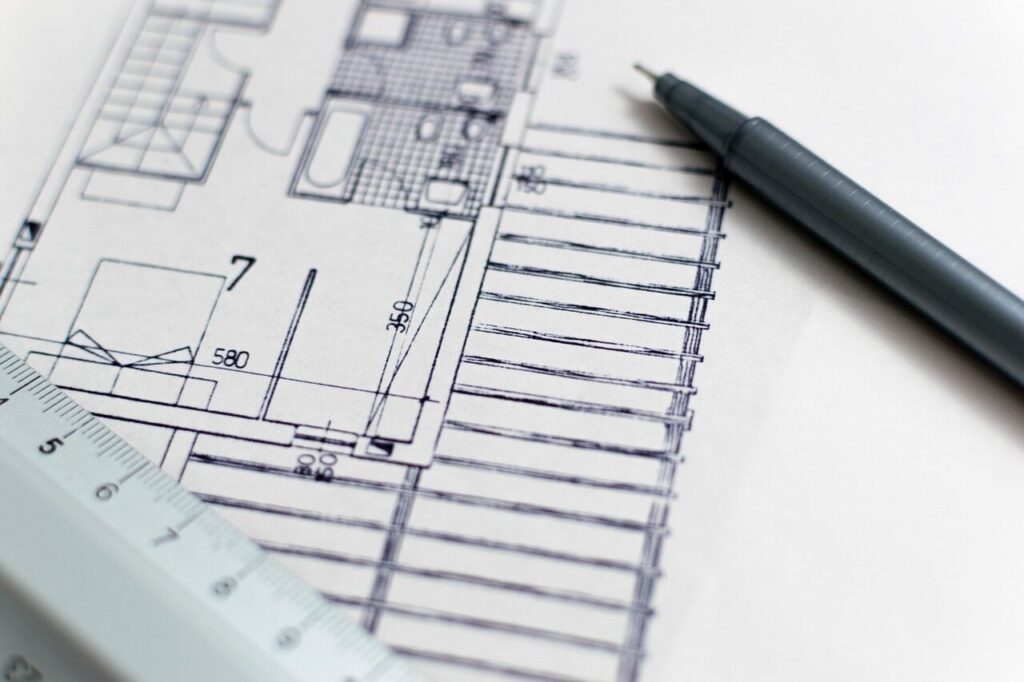With the spotlight on global environmental conservation, sustainable design has shifted from being an optional consideration to a vital component in modern architecture and urban planning. The sustainable design philosophy, at its core, champions the judicious use of natural and built resources, the preservation of culturally significant landmarks, and the promotion of healthful buildings and communities. As such, to be at the forefront of architectural practice today, one must have a deep understanding of sustainable design principles. Moreover, these principles have become integral to the architecture accreditation exam, underscoring their importance for budding architects and their future careers.
Join thousands of students who are acing their Architect Exams!
Diving Deep into the Principles of Sustainable Design
Principle 1: Conservation of Natural Resources
The first key principle of sustainable design revolves around conserving natural resources, the lifeblood of our planet. By incorporating designs that minimize environmental impact, architects can significantly reduce the consumption of energy, water, and curb waste generation.
There are several ways in which this principle is implemented in real-life design scenarios. Buildings and urban environments can be designed to utilize renewable energy sources like solar or wind power, drastically cutting down on the dependence on non-renewable resources. Additionally, incorporating green infrastructure elements, like green roofs and walls, can help manage stormwater, reduce urban heat islands, and improve building insulation. Lastly, adopting sustainable materials during construction plays a crucial role in resource conservation. These materials could include recycled or repurposed materials, locally sourced resources, or those with lower embodied energy.
Principle 2: Conservation of Built Resources
Next, the principle of conserving built resources focuses on preserving historically or culturally important buildings and sites while updating them to fulfill contemporary needs. This process of amalgamating the old with the new is a balancing act of respecting historical context and embracing modernity.
The strategy of ‘adaptive reuse’ shines in this principle. It involves creatively repurposing existing buildings for new uses while maintaining their historical or cultural significance. Another approach involves subtly weaving sustainable design elements into these historic buildings, enhancing their efficiency while ensuring their heritage remains untouched.
Principle 3: Creating Healthful Buildings and Communities
The third principle is all about designing spaces that nurture health and well-being. A design is not truly sustainable unless it improves the quality of life for its inhabitants, promoting physical, mental, and social well-being.
Implementing this principle could include strategies like optimizing natural light and ventilation, which not only reduce energy usage but also contribute to occupants’ well-being. Incorporating green spaces and public parks enhances air quality and offers recreational areas, supporting community health. Further, promoting active transportation by designing pedestrian-friendly pathways and cycling tracks reduces carbon emissions and encourages physical activity.

Application of Sustainable Design Principles in the Architecture Accreditation Exam
Sustainable design principles are no longer just theoretical concepts but have become a critical part of practical architectural education. Their importance is underscored in the architecture accreditation exam, where students are assessed on their ability to apply these principles effectively.
In the exam, students may be presented with various design scenarios where they have to identify sustainable design strategies or demonstrate their knowledge of sustainable materials and construction techniques. They might need to evaluate the environmental impacts of different design choices and consider the social and cultural contexts of their designs.
The exam’s focus on these principles highlights the importance of practical understanding and application, preparing students for real-world architectural challenges. Thus, a thorough comprehension of sustainable design principles is pivotal not only to acing the exam but also to thriving in a modern architectural career.
Consider PrepArchitect as your ally on this journey. With its comprehensive study materials and practical exam tips, PrepArchitect can arm you with the knowledge and skills necessary to excel in the architecture accreditation exam and beyond, helping you become an architect of a sustainable future. Remember, the key to becoming a successful architect in today’s world lies in balancing creative design with sustainable principles.
Exploring Sustainable Design Principles in Depth
Sustainable design is a multidimensional concept that encapsulates a wide range of practices. Let’s delve deeper into each of the principles we’ve outlined above:
Conservation of Natural Resources
Designing with an eye towards resource conservation requires a multi-faceted approach. Here’s a step-by-step guide to understanding this principle in practice:
Step 1: Energy Efficiency
Reduce the energy footprint of your designs by integrating renewable energy sources like solar panels or wind turbines. The positioning of the building can also help harness natural light and heat, thereby reducing dependency on artificial energy sources.
Step 2: Water Conservation
Incorporate water-saving technologies such as rainwater harvesting systems, greywater recycling systems, or high-efficiency plumbing fixtures. Landscaping design can also play a significant role in water conservation through the use of drought-tolerant plants or xeriscaping.
Step 3: Waste Management
The choice of construction materials significantly affects waste production. Opt for materials that are recyclable, repurposed, or those with a long life span to minimize waste. Additionally, consider waste management during the building’s lifetime, such as composting facilities or efficient recycling programs.
Conservation of Built Resources
Respecting and preserving historical or culturally significant structures while retrofitting them for modern use can be challenging. Here’s a step-by-step guide on how to approach this principle:
Step 1: Assess the Building
Identify the building’s historical or cultural significance, its structural integrity, and its potential for modern functionality. This analysis forms the foundation for the subsequent steps.
Step 2: Design with Respect
Design interventions should respect the building’s original character. This means preserving defining features while making necessary alterations. Any new additions should be distinguishable from the old, yet harmonious with the overall design.
Step 3: Implement Sustainable Retrofits
When retrofitting, opt for sustainable alternatives. For example, improve insulation to enhance energy efficiency, install water-saving fixtures, or use eco-friendly materials for any new additions.
Creating Healthful Buildings and Communities
Creating spaces that promote health and well-being involves a balance of many factors. Here’s a step-by-step guide:
Step 1: Harness Natural Elements
Design to maximize natural light and ventilation. This can be achieved by considering the building’s orientation, window placement, and choosing appropriate building materials.
Step 2: Incorporate Green Spaces
Green spaces significantly enhance the well-being of residents. Try to integrate both public and private green spaces in your designs, including parks, community gardens, or even green roofs and walls.
Step 3: Encourage Active Transportation
Design pedestrian-friendly and bike-friendly spaces. This reduces dependence on cars, reduces carbon emissions, and promotes an active lifestyle among residents.
The comprehensive understanding of these principles is crucial for the architecture accreditation exam and real-world architectural practice. Test your knowledge and application skills with PrepArchitect, offering an in-depth study of sustainable design principles and many other architectural concepts. PrepArchitect can be your stepping stone towards a successful and sustainable architectural career.
Closing Remark: As architects of the future, we have the power and responsibility to design with respect for our planet and its inhabitants. The journey starts with understanding and applying these key principles of sustainable design. So, let’s design with a vision of sustainability, not just for the exam, but for the world we wish to see.

Preparing for the Architecture Accreditation Exam
Understanding the sustainable design principles is crucial, but knowing how they apply to the architecture accreditation exam will give you the upper hand. The following strategies will equip you with the necessary skills to demonstrate your understanding effectively.
Understand the Context
Every design decision should be based on its context. Understand the social, cultural, environmental, and historical aspects of a given scenario before making design choices. You might be required to integrate sustainable strategies in an existing urban environment or a historical building, so adaptability is key.
QUICK TIP…
Don’t just passively read or watch your study materials. Engage with them by taking notes, discussing with peers, or teaching the content to someone else. Active engagement can boost comprehension and retention.
Consider Multiple Perspectives
Sustainable design is multifaceted, integrating environmental, economic, and social aspects. While answering exam questions, consider multiple perspectives. An energy-efficient design might be great from an environmental standpoint, but is it cost-effective? Is it socially acceptable and beneficial to the community?
Prioritize Long-term Sustainability
When comparing design choices, think long-term. The initial cost or effort of a sustainable design might be higher, but its long-term benefits often outweigh these concerns. Consider factors like life-cycle costs, long-term environmental impacts, and future adaptability of your designs.
Keep Current with Sustainable Practices
Sustainable design is a rapidly evolving field, with new materials, technologies, and strategies constantly emerging. Stay updated with current trends and innovations. This knowledge can come in handy in the exam and your architectural practice.
With these strategies and a solid understanding of sustainable design principles, you’ll be well-equipped to tackle the architecture accreditation exam.
Wrapping Up
Sustainable design has transformed the field of architecture, advocating for a holistic approach that preserves resources, protects cultural heritage, and promotes well-being. These principles are not just crucial for the architecture accreditation exam, but they are also the foundations for a successful, responsible architectural career.
As future architects, we have the power to shape our built environment and, by extension, the health of our planet. The journey begins with understanding and applying these principles, and that’s where PrepArchitect can be your indispensable ally.
PrepArchitect offers comprehensive study materials and expert guidance to help you grasp and apply these principles effectively. With PrepArchitect, you’ll not just be preparing for an exam; you’ll be embarking on a journey towards a sustainable architectural practice. So, are you ready to become an architect of the future?
DID YOU KNOW…?
Don’t just passively read or watch your study materials. Engage with them by taking notes, discussing with peers, or teaching the content to someone else. Active engagement can boost comprehension and retention.

